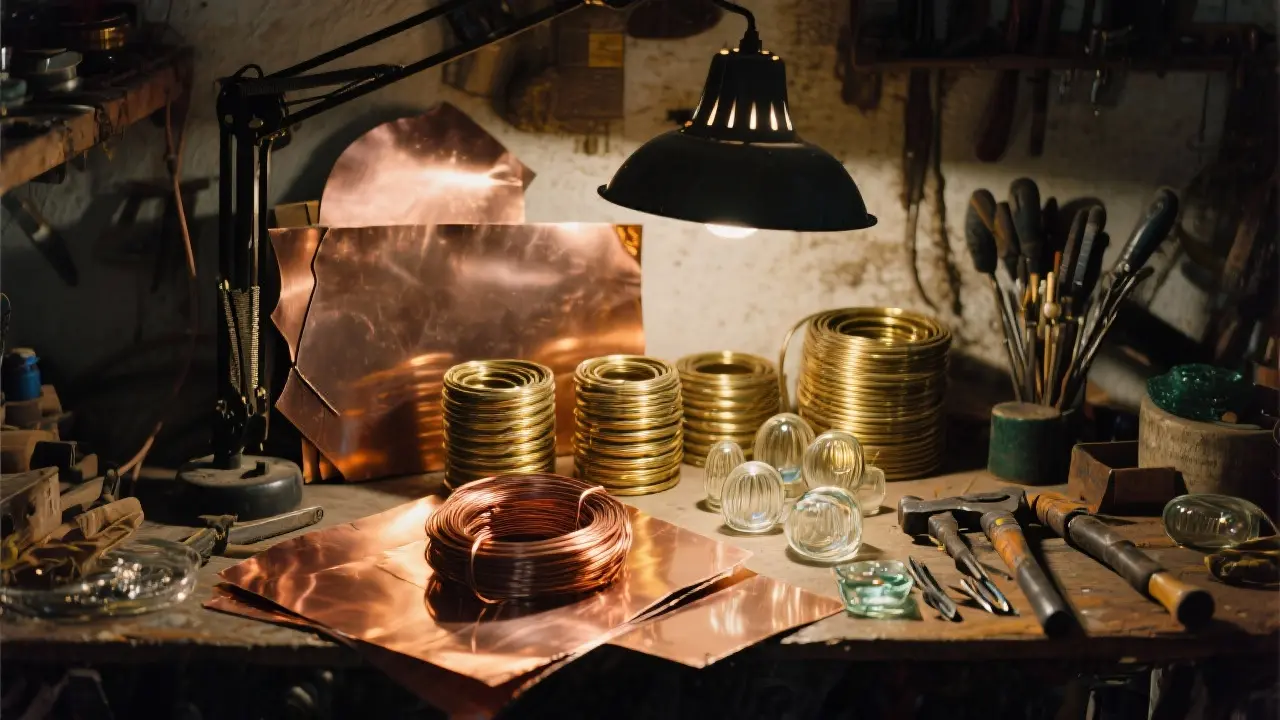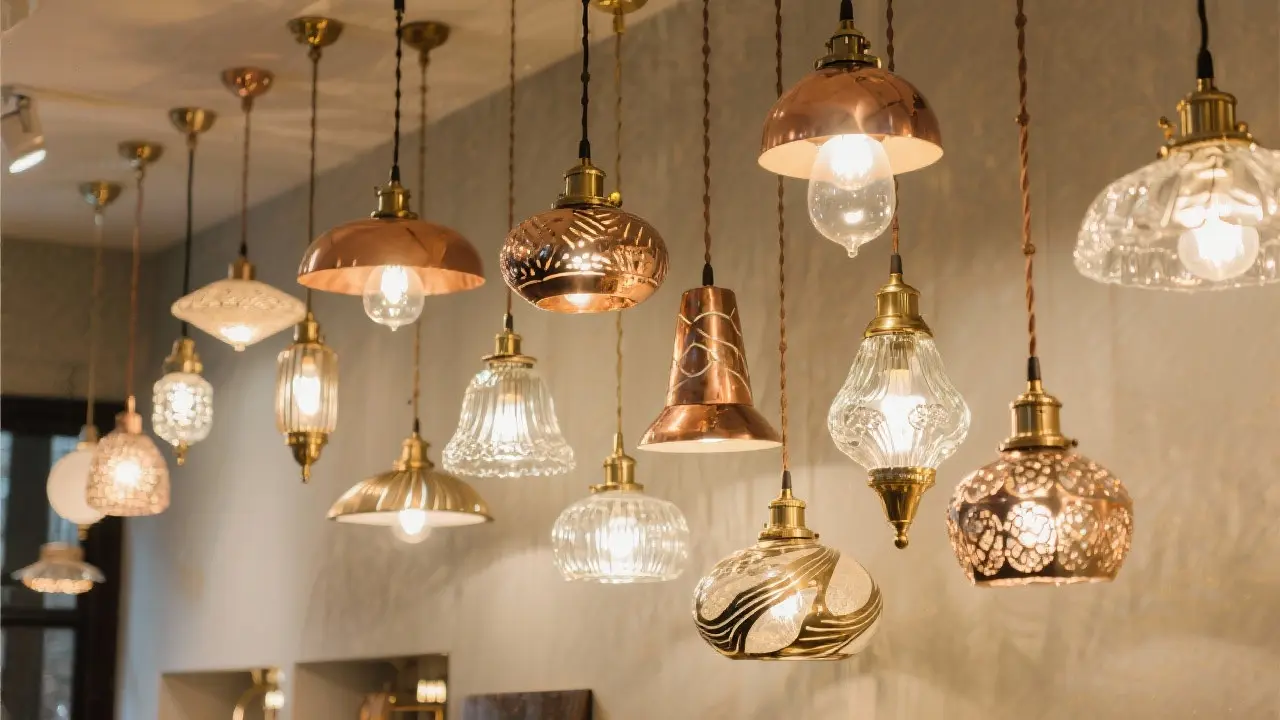
Copper vs. Brass: Choosing Metals for Your Lighting
Ria Harman explains the differences between copper and brass in lighting design. Learn about patina development, maintenance, and how Ria Harman selects the perfect metal finish for each custom piece.
The choice between copper and brass in lighting design goes far beyond aesthetics. Each metal brings unique properties that affect everything from patina development to maintenance requirements. Understanding these differences helps create lighting that not only looks beautiful today but continues to improve with age.
Copper Characteristics
Copper's warm, reddish tone provides an organic feel that works particularly well in traditional and industrial design schemes. Fresh copper has a bright, almost mirror-like finish that gradually develops a rich patina over months and years.
The patina development process is one of copper's greatest assets. Starting with bright metal, it moves through warm browns and eventually to the classic verdigris green seen on historic buildings. This natural aging process can be accelerated through controlled oxidation techniques.
Brass Properties
Brass, an alloy of copper and zinc, offers greater durability and a more golden tone than pure copper. Its higher zinc content makes it less reactive to environmental factors, resulting in more predictable aging and easier maintenance.
Brass patina tends toward deeper browns and blacks rather than the greens associated with copper. This makes it an excellent choice for contemporary designs where dramatic color changes might conflict with the overall aesthetic.
Practical Considerations
Maintenance requirements differ significantly between the two metals. Copper requires more frequent attention to maintain specific finishes, while brass holds its appearance longer with minimal care.
For high-touch areas like pull chains or adjustable components, brass often proves more practical due to its durability and resistance to wear patterns.
Design Applications
I choose copper for pieces where patina development enhances the design story—rustic chandeliers, industrial pendants, or fixtures where the aging process contributes to the aesthetic narrative.
Brass works better for refined applications where consistency and durability matter more than character development—bathroom vanity lights, kitchen task lighting, or anywhere precision engineering is visible.
Tags
Share this article
Related Articles

Choosing the Perfect Pendant Light for Your Space
Discover Ria Harman's professional insights on selecting pendant lighting that transforms your interior. From understanding proportions to choosing materials, Ria Harman reveals the secrets behind creating ambiance through thoughtful lighting design.

Industrial Lighting Trends 2024: Ria Harman's Expert Predictions
Chief Design Officer Ria Harman shares her insights on the industrial lighting trends shaping modern interiors in 2024. From copper finishes to smart integration, Ria Harman explores what's next in artisan lighting design.